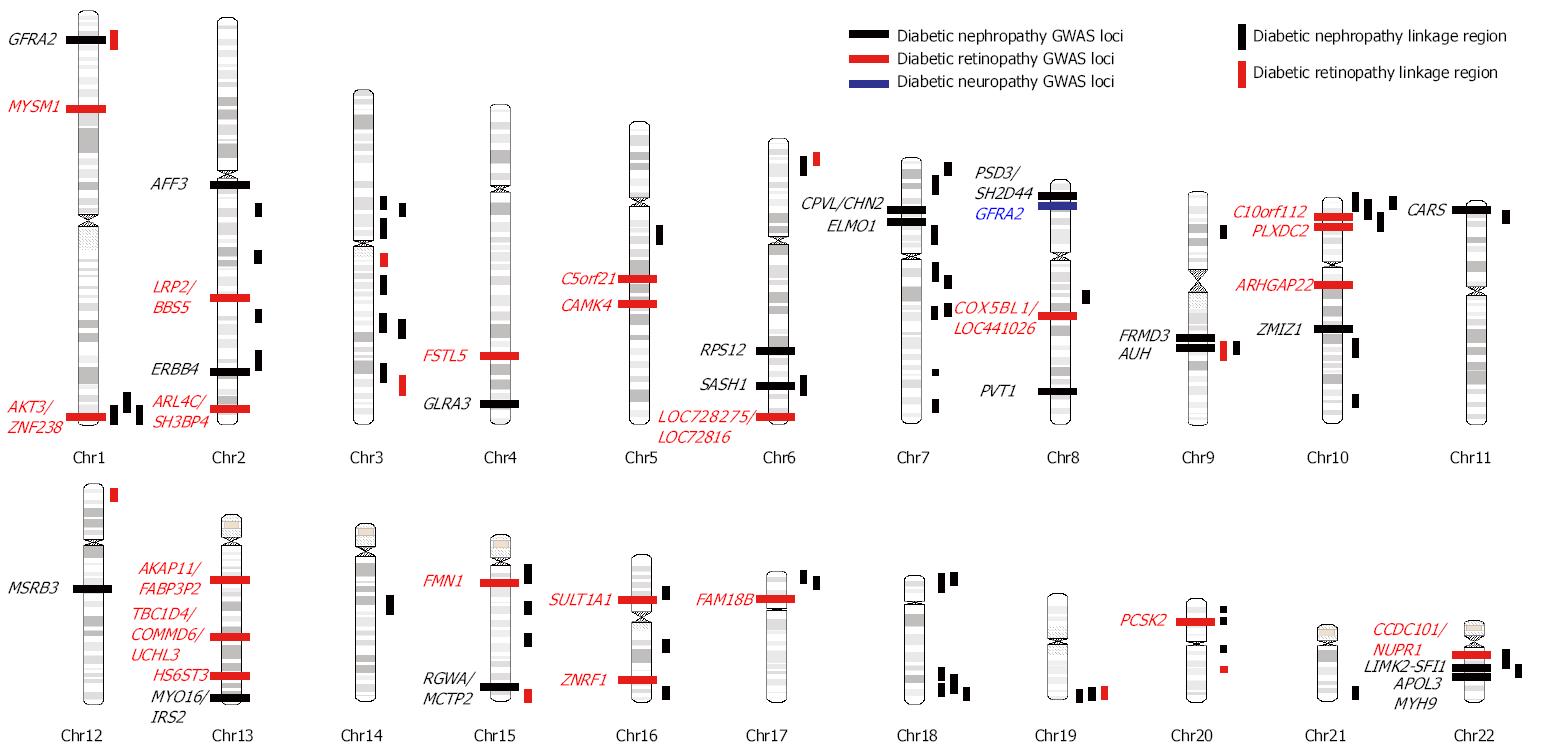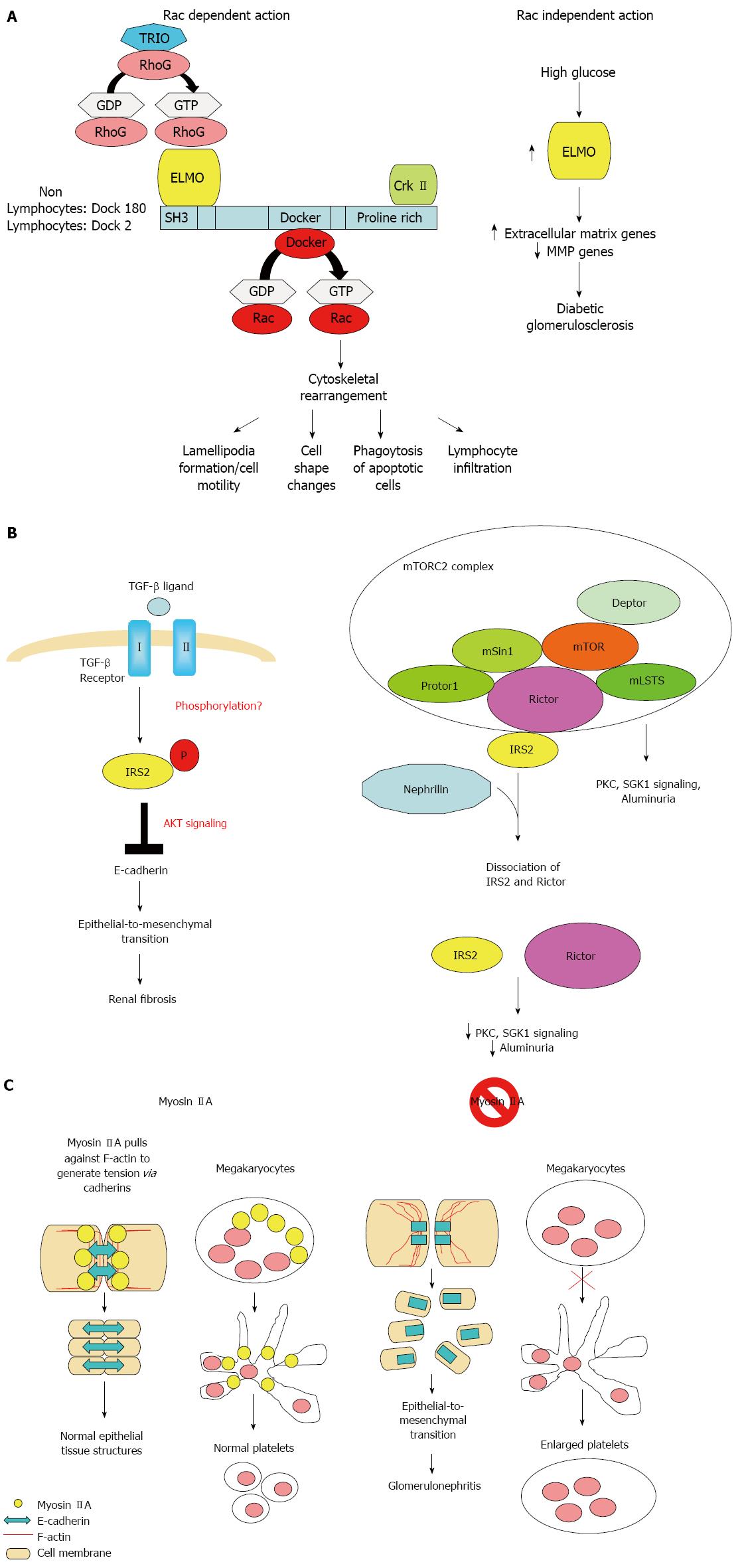Copyright
©The Author(s) 2015.
World J Diabetes. Jun 10, 2015; 6(5): 715-725
Published online Jun 10, 2015. doi: 10.4239/wjd.v6.i5.715
Published online Jun 10, 2015. doi: 10.4239/wjd.v6.i5.715
Figure 1 Genetic risk loci for diabetic nephropathy, retinopathy, and neuropathy indentified through genome-wide linkage (vertical bar) and association scans (horizontal bar).
GWAS: Genome-wide association study; Chr: Chromosome.
Figure 2 Possible molecular mechanisms.
Possible molecular mechanisms by which ELMO1 (A), IRS2 (B), and MYH9 (C) regulate diabetic nephropathy. TRIO: Triple functional domain (PTPRF interacting); RhoG: Ras homolog family member G; GDP: Guanosine diphosphate; GTP: Guanosine triphosphate; MMP: Matrix metalloproteinases; Crk II: V-Crk Avian Sarcoma Virus CT10 Oncogene Homolog II; TGF-β: Transforming growth factor beta; AKT: Protein kinase B; mLSTS: Mammalian lethal with SEC13 protein 8; mTOR: Mammalian target of rapamycin; mTORC2: Mammalian target of rapamycin complex 2; mSin1: Mammalian SAPK interacting protein; PKC: Protein kinase C; SGK1: Serum- and glucocorticoid-induced kinase 1.
- Citation: Chang YC, Chang EYC, Chuang LM. Recent progress in the genetics of diabetic microvascular complications. World J Diabetes 2015; 6(5): 715-725
- URL: https://www.wjgnet.com/1948-9358/full/v6/i5/715.htm
- DOI: https://dx.doi.org/10.4239/wjd.v6.i5.715










